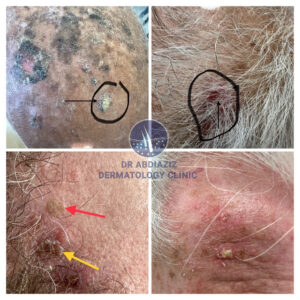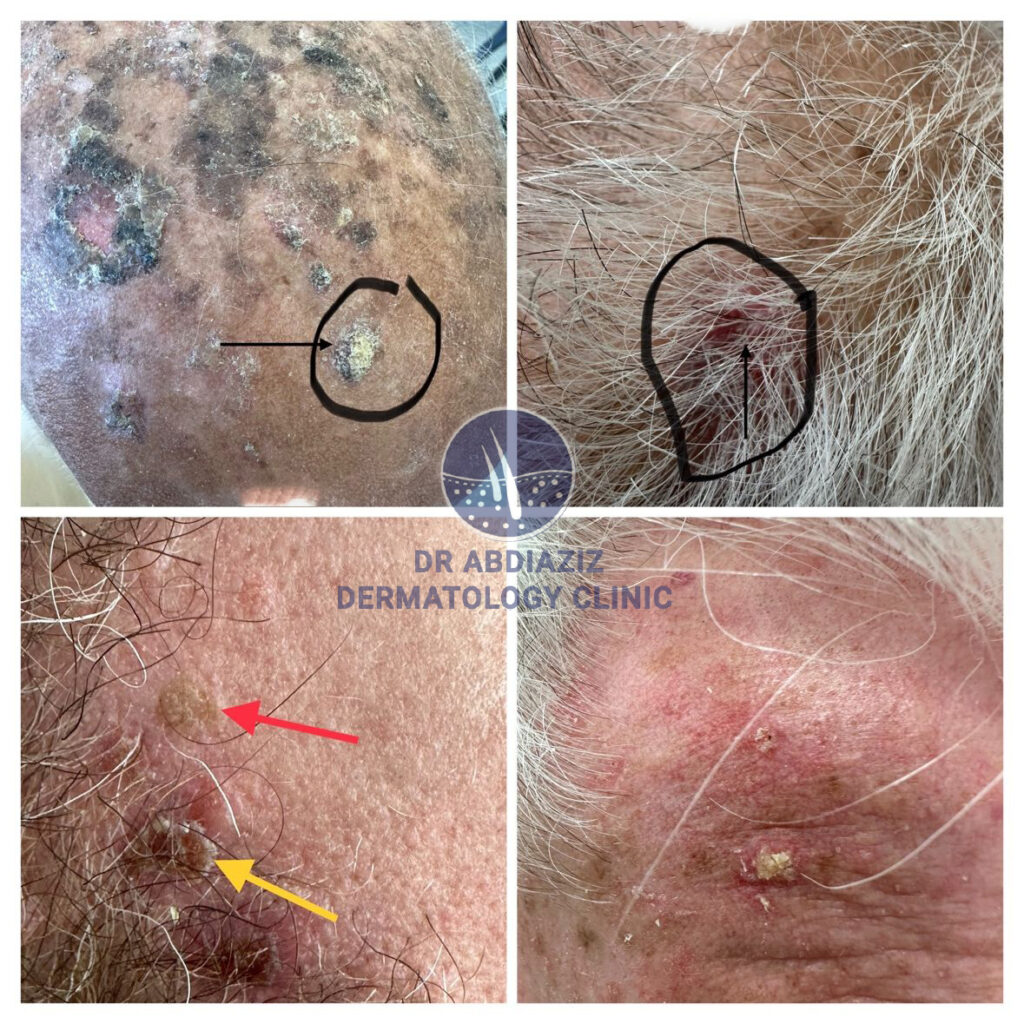
What is Actinic Keratosis?
Actinic keratosis (AK), also known as solar keratosis, is a rough, scaly patch on the skin caused by years of sun exposure. It most commonly appears on areas frequently exposed to the sun, such as the face, ears, scalp, neck, forearms, and hands.
Although actinic keratosis is not cancerous, it is considered a precancerous condition. If left untreated, it can develop into squamous cell carcinoma, a type of skin cancer.
Who is at Risk?
Actinic keratosis is most commonly seen in:
-
People over 40 years of age
-
Individuals with fair skin, light hair, and blue or green eyes
-
Those who spend a lot of time in the sun or use tanning beds
-
People with weakened immune systems
Common Symptoms
-
Rough, dry, or scaly patches on the skin
-
Flat or slightly raised areas that may be pink, red, or flesh-colored
-
Itching, burning, or tenderness in the affected area
-
In some cases, lesions may develop a hard, wart-like surface
These patches often feel like sandpaper and may come and go, but they usually return in the same place.
Diagnosis
A dermatologist can often diagnose actinic keratosis with a visual examination. In some cases, a skin biopsy may be performed to rule out skin cancer.
Treatment Options
Topical Medications
Prescription creams and gels like fluorouracil, imiquimod, or diclofenac can be applied directly to the lesion to destroy abnormal cells.
Cryotherapy
Liquid nitrogen is used to freeze and destroy the affected skin. This is one of the most common and effective treatments for individual lesions.
Photodynamic Therapy (PDT)
A light-sensitive solution is applied to the skin and then activated by a special light, destroying the abnormal cells.
Laser Therapy or Chemical Peels
These treatments remove the top layers of damaged skin and are especially useful for patients with multiple lesions.
Curettage and Electrosurgery
The lesion is scraped off, and the area is treated with an electric current to stop bleeding and kill remaining abnormal cells.
Can Actinic Keratosis Be Prevented?
Yes, preventive measures can significantly reduce your risk:
-
Apply broad-spectrum sunscreen (SPF 30 or higher) daily
-
Avoid tanning beds and limit sun exposure, especially during peak hours
-
Wear protective clothing, hats, and sunglasses when outdoors
-
Perform regular skin checks and see a dermatologist for annual screenings
When to See a Dermatologist
If you notice any rough or scaly patches on your skin that don’t heal, it’s important to have them evaluated. Early treatment can prevent progression to skin cancer.
Final Thoughts
Actinic keratosis is a warning sign from your skin after years of UV damage. The good news is that it’s treatable—and often preventable. With early detection and proper care, you can maintain healthy skin and lower your risk of developing skin cancer.
Concerned about a rough patch on your skin?
Book an appointment with Dr. Abdiaziz Mohamed today for a comprehensive skin evaluation and expert dermatological care.

